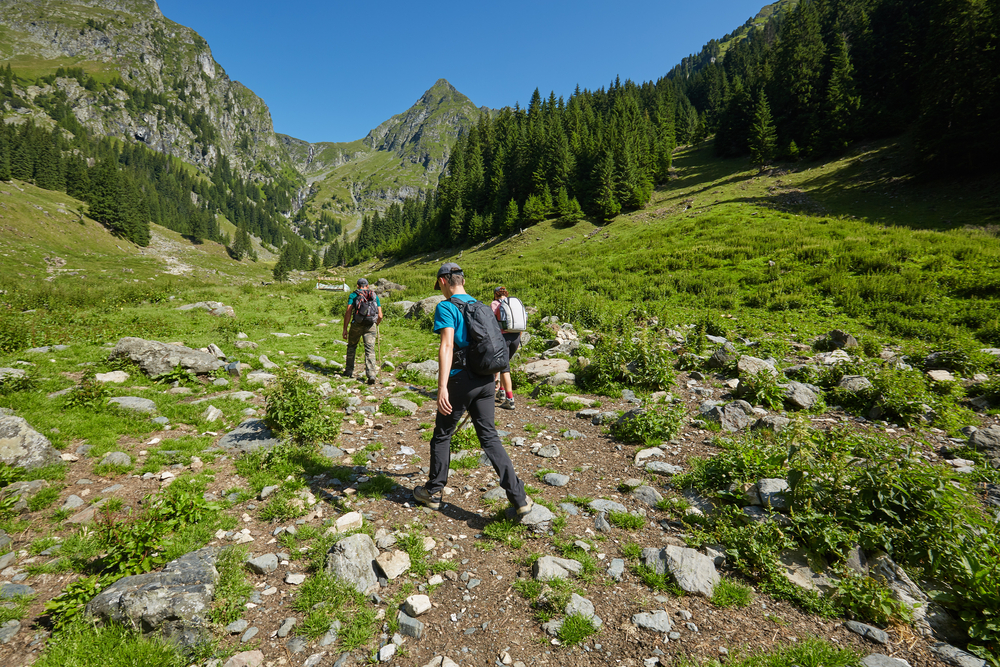Also known as outdoor behavioral therapy, wilderness programs for teenagers are becoming increasingly popular.
And it’s not hard to see why. As a society, we are so far removed from nature, leaving us very little opportunity to utilize the full benefit of spending time outdoors.
Wilderness therapy recognizes this lack and is designed to bring us back to the natural environment around us. In doing so, we can harness the healing powers of Mother Nature.
In this post, we will look at what goes into a therapeutic wilderness program and the holistic benefits of tapping into nature for troubled teens. We will also highlight how to decide on a wilderness program that is fit for your teen and your family.
What are The Key Features Of a Wilderness Program?
Wilderness therapy, or wilderness camps, are short-term programs centered on physical outdoor activity.
From hiking to mountain trails to abseiling and camping, outdoor behavioral therapy caters to various interests, making it a viable alternative to standard treatment.
Let’s delve into some of the characteristics of wilderness therapy.
Alternative setting
Unlike the clinical feel of a therapist’s office, a wilderness program takes place almost entirely outside.
This may not be a favorite option for all teens, especially those who enjoy the luxury of a warm shower and bed every night, but the benefits far outweigh the lack of fancy amenities. We’ll get to these advantages a little bit later.
Hands-on skills acquisition
In wilderness therapy, you’re not just doing the mental and emotional work. You are also learning valuable life skills, such as making a fire and setting up a camp.
Character development
A wilderness program also offers the opportunity to foster key social skills that will help your teen in their everyday life.
Through well-arranged and targeted activities, troubled teens learn to work in a team, solve problems, and manage emergencies.
Connection with Authority figures, peers, and nature
In most outdoor therapy programs, there is an end goal that the team needs to reach. For example, the summit of a mountain.
To get there safely, the team needs to listen to those in charge, work with their peers, and respect and learn from their natural environment.
Wilderness therapy is based on this connection with those around you and nature.
Advantages Of Outdoor Behavioral Therapy
The holistic offerings of wilderness therapy combine the magical healing powers of nature and the benefits of specialized treatment.
Let’s look at some more of the upsides to enrolling your troubled teen in an open-air therapy program.
A boost in cognitive and emotional capacity
The less time we spend in nature, the more damaging it is to our brain development and ability to regulate emotions.
Moreover, when teens are cooped up in their rooms, chances are they’re sitting on their smartphones. When you add an unhealthy relationship with screens and social media to a lack of physical outdoor activity, there are bound to be short-term and long-term disadvantages.
Wilderness camps create a setting for teens to put away their phones and connect with the natural world around them. In turn, they improve their abilities to think clearly and regulate their emotions.
All-round approach to healing
Wilderness therapy addresses physical, mental, and emotional concerns in teenagers. This aligns with holistic therapy options, which seek to heal the whole child instead of treating their symptoms.
In the long run, the benefits of this integrated therapy model will see your troubled teenager using the skills and tools they learned during wilderness therapy well into adulthood.
Impactful engagement
Unlike traditional therapy, outdoor therapy camps offer hands-on opportunities to work through challenges in a wilderness setting.
In turn, troubled teens gain real-life experience, which they can use in other scenarios to solve problems and work on themselves.
Increase in physical activity
Wilderness camps are based on movement and exercise. Similar to a military-style program, albeit not as rigorous.
This may inspire your troubled teen to continue using physical activity as a means to deal with their issues long after the camp has ended.
Distraction-free environment
Without the negative influences from their current living situation and free of devices and gadgets designed to distract, troubled teens are put in a space where they can sit quietly and contemplate what is going on in their lives.
And what better way to do this than in a setting filled with the sounds, smells, and sights of beautiful nature?
Factors To Consider When Choosing a Wilderness Therapy Program
With wilderness therapy, it can go either way, depending on your teen’s personality and preferences.
In an ideal situation, they walk away from the camp, having fallen in love with nature. The hope is that they continue to tap into the benefits of outdoor spending.
On the other hand, for a teen who hates every minute of outdoor activity, a wilderness program may put them off any form of nature time entirely.
This makes choosing the best fit for your teen and their personality even more imperative.
Help Your Teen Now offers free advice and guidance on finding the right program and boarding school for your child to aid you in this decision.










0 Comments